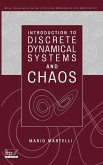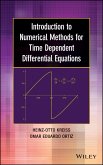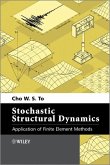Dynamical Systems Method (DSM) is a powerful general method for solving operator equations. These equations can be linear or nonlinear, well-posed or ill-posed. The book presents a systematic development of the DSM, and theoretical results are illustrated by a number of numerical examples, which are of independent interest. These include: stable differentiation of noisy data, stable solution of ill-conditioned linear algebraic systems, stable solution of Fredholm and Volterra integral equations of the first kind, stable inversion of the Laplace transform from the real axis, solution of nonlinear integral equations, and other examples. Chapter coverage includes ill-posed problems; well-posed problems; linear ill-posed problems; inequalities; monotone operators; general nonlinear operator equations; operators satisfying a spectral assumption; Banach spaces; Newton-type methods without inversion of the derivative; unbound operators; nonsmooth operators; DSM as a theoretical tool; iterative methods; numerical problems arising in applications; auxiliary results from analysis; a discrepancy principle for solving equations with monotone operators; solving linear equations; stable numerical differentiation; deconvolution problems; numerical implementation; and stable solution to ill-conditioned linear algebraic systems.
Demonstrates the application of DSM to solve a broad range of operator equations
The dynamical systems method (DSM) is a powerful computational method for solving operator equations. With this book as their guide, readers will master the application of DSM to solve a variety of linear and nonlinear problems as well as ill-posed and well-posed problems. The authors offer a clear, step-by-step, systematic development of DSM that enables readers to grasp the method's underlying logic and its numerous applications.
Dynamical Systems Method and Applications begins with a general introduction and then sets forth the scope of DSM in Part One. Part Two introduces the discrepancy principle, and Part Three offers examples of numerical applications of DSM to solve a broad range of problems in science and engineering. Additional featured topics include:
General nonlinear operator equations
Operators satisfying a spectral assumption
Newton-type methods without inversion of the derivative
Numerical problems arising in applications
Stable numerical differentiation
Stable solution to ill-conditioned linear algebraic systems
Throughout the chapters, the authors employ the use of figures and tables to help readers grasp and apply new concepts. Numerical examples offer original theoretical results based on the solution of practical problems involving ill-conditioned linear algebraic systems, and stable differentiation of noisy data.
Written by internationally recognized authorities on the topic, Dynamical Systems Method and Applications is an excellent book for courses on numerical analysis, dynamical systems, operator theory, and applied mathematics at the graduate level. The book also serves as a valuable resource for professionals in the fields of mathematics, physics, and engineering.
Demonstrates the application of DSM to solve a broad range of operator equations
The dynamical systems method (DSM) is a powerful computational method for solving operator equations. With this book as their guide, readers will master the application of DSM to solve a variety of linear and nonlinear problems as well as ill-posed and well-posed problems. The authors offer a clear, step-by-step, systematic development of DSM that enables readers to grasp the method's underlying logic and its numerous applications.
Dynamical Systems Method and Applications begins with a general introduction and then sets forth the scope of DSM in Part One. Part Two introduces the discrepancy principle, and Part Three offers examples of numerical applications of DSM to solve a broad range of problems in science and engineering. Additional featured topics include:
General nonlinear operator equations
Operators satisfying a spectral assumption
Newton-type methods without inversion of the derivative
Numerical problems arising in applications
Stable numerical differentiation
Stable solution to ill-conditioned linear algebraic systems
Throughout the chapters, the authors employ the use of figures and tables to help readers grasp and apply new concepts. Numerical examples offer original theoretical results based on the solution of practical problems involving ill-conditioned linear algebraic systems, and stable differentiation of noisy data.
Written by internationally recognized authorities on the topic, Dynamical Systems Method and Applications is an excellent book for courses on numerical analysis, dynamical systems, operator theory, and applied mathematics at the graduate level. The book also serves as a valuable resource for professionals in the fields of mathematics, physics, and engineering.








